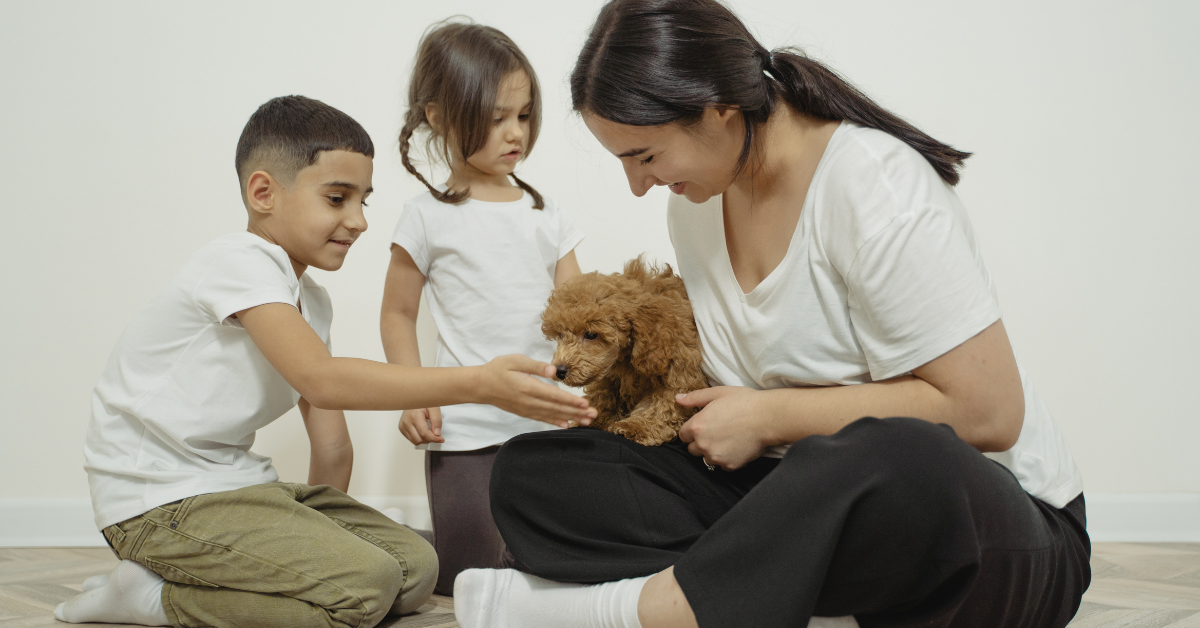
Mutual Respect: The Key to Keeping Both Your Child and Pet Safe
Children have a natural curiosity about animals and at some point nearly every parent hears, “Mom, Dad, can I keep it?” as their child clutches a small furry something, beaming expectantly. The first worry most parents feel in this situation is, “how do I keep both my child and the new pet safe.” Many people don’t know that most domestic animals, with the right training, naturally respect and obey humans. This article will use the idea of teaching “mutual respect” to show how you can use it in your home to help you and your family transition a new pet into your family safely.
Before the pet
Before considering bringing a pet into a home with children, it’s very important to teach the children respect and kindness towards all animals. Expose children to many different animals early in life and often. Parents should supervise these events and make sure both the animal and child interact safely. The more you expose your child to different kinds of animals, in safe but unique situations, the more your child will come to love, trust and respect animals.
It’s equally important to consider the type of pet and specific breed. Not all breeds are equally appropriate for every family. Do a lot of research before selecting a pet to make sure the species and breed are the right ones for your family. If the new pet is young, you will need to do some puppy/kitty-proofing of your home. You will also want to have food, food/water bowls, toys, bedding as well as collars, leashes, litter and litter box if a cat and, grooming supplies on hand before bringing the pet home.
Be sure to establish clear and specific rules and responsibilities for everyone in the house, especially the children. Make sure they know what is and is not okay to do with and to the new pet. Assign specific responsibilities for the care, feeding and training of the pet to each family member. It’s important to make each child feel like a participant in caring for the new pet.
Bringing the pet home
You’ve done the research and selected a pet that fits your family well, you’ve puppy-proofed as much as you can and, taught all the children how to treat the new pet. It’s time to bring the new pet home. This will take some work on your part. You can bring your children and other family members into the homecoming by having them help you set up sleeping, feeding and potty spots for the new pet.
To help everyone, including the new pet, adjust to the new living situation it might help to start with limiting the pet to one room or area of the house and introduce it to the other areas slowly, over a few days. It’s important that you introduce any other pets right away; ideally, you introduced all the animals before bringing the new pet home. This will help ensure that there are fewer adjustment problems.
Your new family pet
Every living being wants to feel loved, cared for and to know how they are supposed to act. By providing your new pet these few simple things, you are giving it confidence. You are teaching it how to receive the things it needs (food, water, shelter and love) and training it in the right ways to behave around you and your family.
There are dozens of theories on dog training and as many books and websites on the subject. Many of these are appropriate if you want to train your pet in some specific way or for some particular job. By giving your new pet love, trust, respect and clear communication of what you expect from it, anyone can have a household that is safe for everyone in it.
For activities on teaching children about pet care, visit the American Veterinary Medical Association (http://www.avma.org/careforanimals/kidscorner/default.asp).






